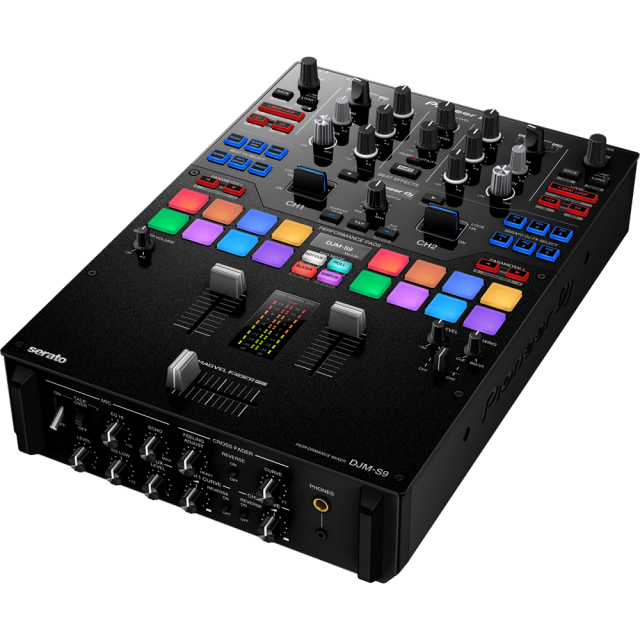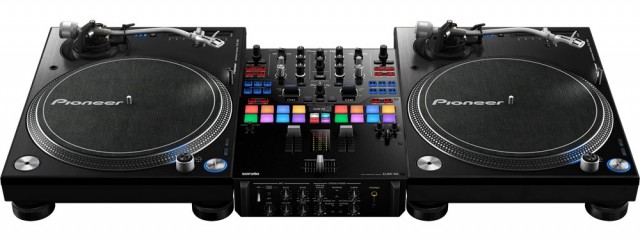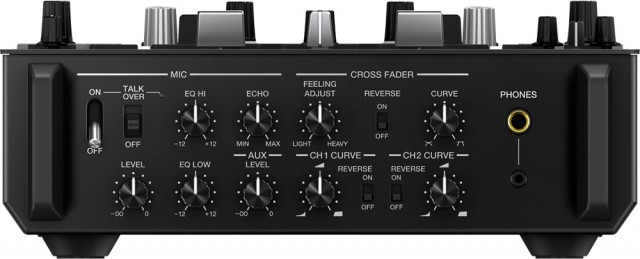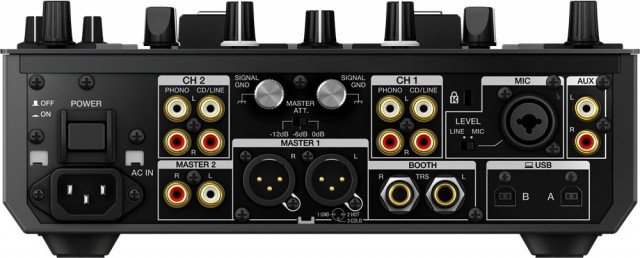Meet Pioneer’s new push, a strategy aiming squarely at scratch and turntablist DJs and effects lovers, with or without a computer.
If some of the latest mixers have conventional analog mixing, bread and butter features, and rotaries, Pioneer’s DJ mixer this week – isn’t any of that. Instead, the DJM-S9 is a “battle” mixer loaded up with extras and emphasizing scratch and effects features. And it is unmistakably a Pioneer box in that it draws heavily on wild effects.
It’s a “party rocking mixer” as an artist describes it in the launch video.
Also, watch the video. What you mostly don’t see is a laptop. So while Serato integration is a selling point, you mostly see turntables spinning away, and Pioneer is quick to emphasize that the S9 works without a computer at all.
A turntablist strategy is a big part of what Pioneer is emphasizing (and, I might add, the polar opposite of the strategy at Native Instruments). So, the company that just got into the turntable business is also coming with the introduction of a PC-X10 cartridge and stylist.
Both the mixer and Pioneer’s turntable will also come in a very spendy limited-edition gold-plated edition. (Right, then!)
The S9 is the main story, though. Here’s the quick run-down:
- Scratch-focused crossfader. It’s called “Magvel Fader Pro” (sounds like some sort of new high-speed Chinese train). But the idea is durability: high-performance scratch operation, contactless magnetic operation. And it’s customizability – shock-absorbing bumpers with different levels of resistance and configurable curve and response.
- Colored pads. If electronic music vendors made toasters, I suspect they’d have colored pads on them now, too. But on the DJM, they trigger cue, roll, slice, and loop features on their own, or you map them to Hot Cues and other features if you’re a Serato user.
- Effects, with or without a computer. Onboard, you get 15 Pioneer effects – echo, delay, reverb, flanger, phaser, trans, beat FX, BPM-synced. And you get filter effects, too. Effects are the reason I know a lot of DJs ask for Pioneer on their tech rider. But interestingly, if you do use Serato, you can map its 55 iZotope-developed effects instead (with its effects pack).
- My God, it’s full of sound cards. Two USB sound cards. Four deck support. Switch inputs on the front.
In other words, take the mixing features of the DJM-909 battle mixer and cross-breed them with the effects features of the RMX-1000, then add a bunch of Serato integration for those who want it (or ignore that, for those who don’t). (Inside, Pioneer says they’ve “inherited” the audio circuitry from their top-of-range DJM-2000NXS.)
If you don’t get one in a club, you can carry it around easily – it weighs just 4.6 kg. And it still is fully MIDI-compatible, so while there’s no mention of Traktor here, I imagine it’s only a matter of time before someone creates a map.
And then you have a mixer that works for turntablists, that works for Serato mavens, that works for people who love Pioneer effects, and works (finally) for people who want to play back to back – even if they’re using two computers.
It’s gimmicky. It’s not bread and butter. But for DJs who use a mixer as an instrument, I think it’s likely to be dynamite. It could be the most popular thing Pioneer unveils this year.
And by the way, it makes me still frankly puzzled why no one has come up with a clever performance mixer for producers who play live but aren’t turntablists. Roland’s AIRA mixer was one attempt, but it’s pretty specific to the AIRA lineup.
In the meantime, if this isn’t a hit, I’ll eat my slipmats.
BATTLE READY: TWO-CHANNEL MIXER FOR SERATO DJ GIVES YOU THE POWER TO PERSONALISE [Pioneer DJ News Release]



